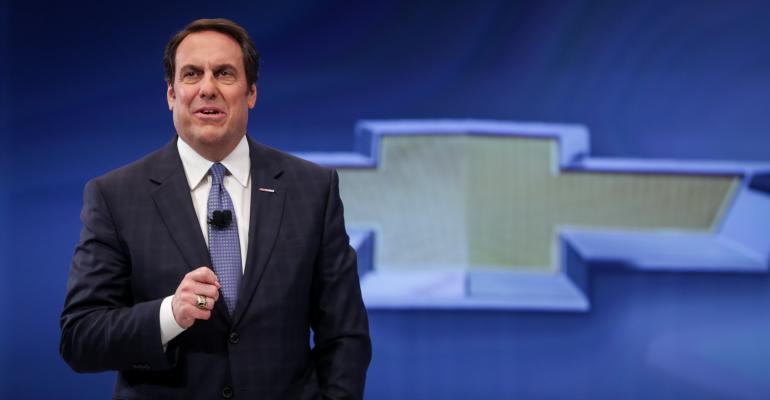DETROIT – General Motors Executive Vice President Mark Reuss says the automaker’s hydrogen-fuel-cell activities could result in a product other than an automobile and is convinced a market for electric vehicles is naturally emerging outside of regulatory drivers.
GM has been developing fuel-cell vehicle technology for decades, most recently logging more than 3 million real-world miles (4.8 million km) on a fleet of Chevy Equinox FCVs lent to everyday customers as part of a field research project.
The automaker also recently joined with Honda, another longtime FCV researcher, to bring the technology to market. Honda will sell one first, as part of their agreement, with its FCV due next year. GM is expected to follow, but Reuss says its fuel-cell stack technology may not be exclusive to light vehicles.
“It probably won’t be in a Frigidaire,” he jokes, recalling GM’s 60-year ownership of the home appliance brand. But GM’s product-development chief does see potential for the technology in stationary roles such as power generation in underdeveloped regions of the world.
“Our stack could be used in a lot of different ways,” he says of the technology, which in its second generation is half the size of the Equinox unit, 220 lbs. (100 kg) lighter and uses less than half the precious metal. “It’s wrong to look at that technology purely as a transportation activity.
“Power generation for places that do not have infrastructure to deliver power,” he offers. “That makes sense, a place where you don’t have power and you can’t build an infrastructure quickly enough to deliver power.”
Stationary use solves a major infrastructure dilemma for the technology itself, because power-generation units do not require the daily re-fueling regime of an automobile.
Hydrogen refueling points for FCVs are scarce. In California, which seeks to become an FCV leader, fewer than 10 public refueling points exist.
“I always thought it would be an incredible use for (fuel cells), a developing country, a homesteader or something like that,” Reuss tells WardsAuto during an interview at the North American International Auto Show here.
Reuss also says a market is emerging for EVs and plug-in EVs, and it is not driven by regulatory demands or subsidies, even in a day of $2 per-gallon gasoline.
“The buyer behaviors that drive the (market), feeling good about sustainability and dependence on foreign oil and the environment, are real and they tend to be a generation behind me,” he says. “The customer data says that, but they don’t want to pay a big penalty for it.”
GM solved that, he claims, with the Chevrolet Bolt unveiled Monday. The EV concept, likely bound for production soon, gets an estimated 200 miles (322 km) on a single charge to eliminate range anxiety. It also can carry more cargo than a typical EV, and GM says its intended sticker price of $30,000 makes it affordable. “That car is our answer to a lot of those deficiencies,” he says.
Reuss denies the Bolt was motivated by Tesla envy. The California EV maker has become a Wall Street darling with stock trading at more than $200 per share. GM’s stock trades at about $35 per share. Potentially profitable EV credits, which Tesla sells for millions of dollars, played no role, either.
“Not a bit, he says. “Anytime you do great products that people want your stock price tends to go up.”
However, whether the Bolt can move EV sales up remains a big question. The market, including plug-in hybrids EVs totaled just 119,945 units last year in market that saw 16.44 million light-vehicle deliveries.





